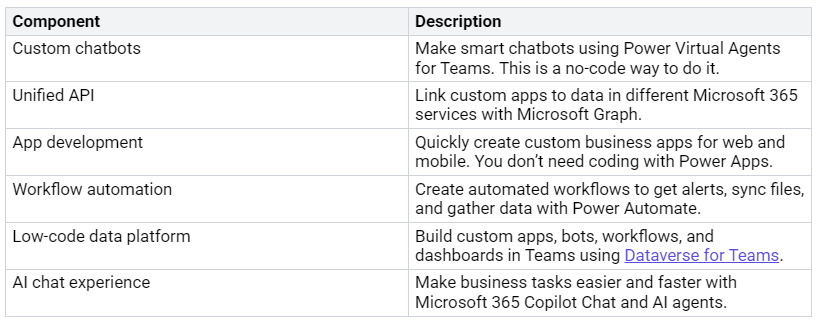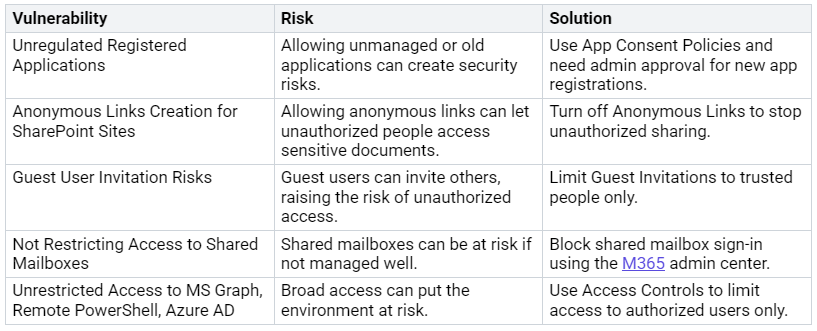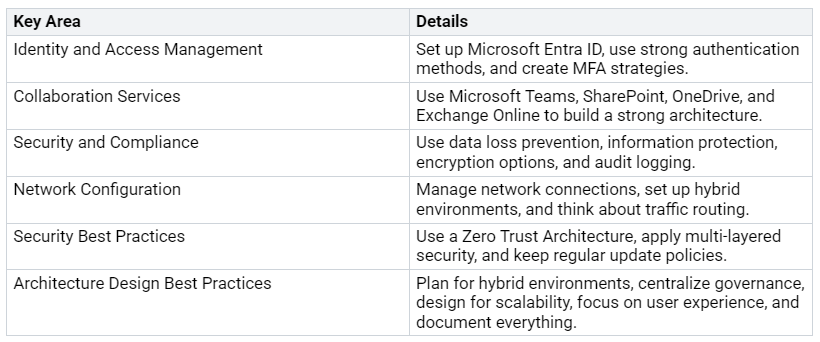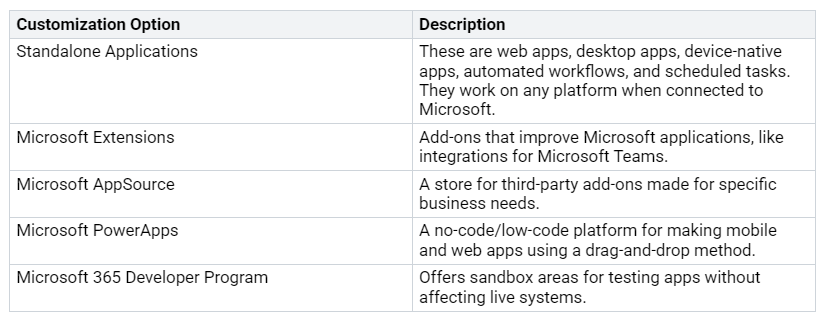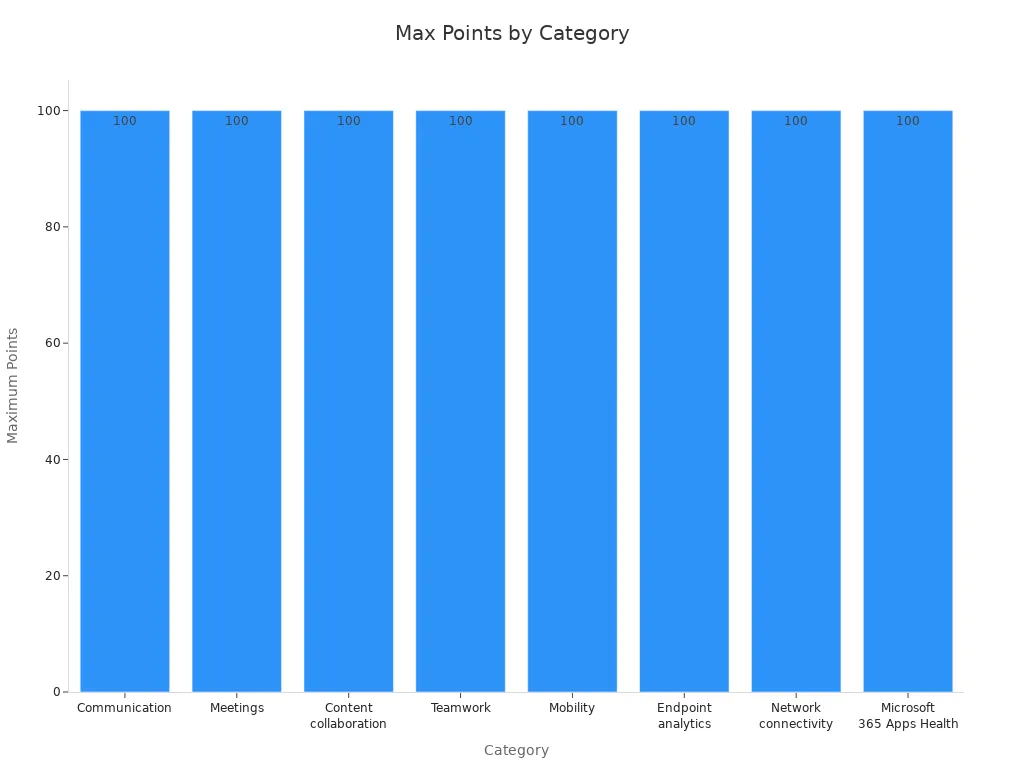In today’s digital world, knowing Microsoft 365 Development is very important for organizations. You have more demands for safe and flexible solutions that can change with business needs. Recent reports say that organizations with many global admin accounts are more likely to have account problems. Also, more than half of organizations have many apps with large permissions. This shows the need for good management. By focusing on safety and flexibility, you can build strong solutions. These solutions will not only solve current problems but also help your organization succeed in the long run.
Key Takeaways
Focus on security by using the least privilege rule. Limit user permissions to lower the risk of unauthorized access.
Use Microsoft 365 tools like Power Platform and Microsoft Graph. These tools help create custom apps that boost productivity.
Plan for growth by building strong systems. Regularly check app performance to meet increasing user needs.
Set up a good governance plan. This should include clear rules, regular training, and checking for compliance to keep a safe environment.
Keep up with Microsoft 365 changes. Test new features in a safe space and adjust your apps as needed.
Microsoft 365 Overview
Microsoft 365 is a strong platform for development. It helps you create new solutions for your organization. It has many tools and services. These tools help you build apps, automate tasks, and work better together. Knowing the main parts of Microsoft 365 is important for any developer. This knowledge helps you use its full power.
Key Components
Here are some main parts of Microsoft 365 that you can use to build business solutions:
These parts help you make solutions that fit your organization’s needs. By using these tools, you can boost productivity and make processes smoother.
Development Tools
Microsoft 365 has many development tools. These tools help you create and manage applications easily. Some of these tools are:
Microsoft Graph: This unified API lets you access data across Microsoft 365 services. It makes it easier to connect and manage your apps.
Power Platform: This set includes Power Apps, Power Automate, and Power BI. It helps you build apps, automate tasks, and analyze data without much coding.
SharePoint Framework (SPFx): This framework helps you create modern web parts for SharePoint and Teams. It improves user experience.
By learning these tools, you can work well with the Microsoft 365 system. You can create solutions that are safe and can grow with your needs.
Designing Secure Solutions
In Microsoft 365 Development, making secure solutions is very important. You need to focus on security at every step of your development. This helps protect sensitive data and builds trust with users. Here are some key security best practices to follow:
Security Best Practices
Uphold the Principle of Least Privilege: Make sure users only have the permissions they need for their tasks. This lowers the chance of unauthorized access.
Implement Strong Data Classification and Labeling Policies: Sort data by sensitivity. This helps apply the right security measures.
Regular Training and Awareness Campaigns: Teach your team about security threats and best practices. Awareness can greatly lower risks.
Ongoing Auditing and Monitoring: Check user activities and access logs often. This helps you find and fix potential security issues quickly.
Governance and Policy Enforcement: Set clear rules for app use and data access. Enforce these rules to keep a secure environment.
A survey of 600 companies showed that 71.4% of Microsoft 365 business users have at least one compromised account each month. This shows how common security problems are in Microsoft 365 environments.
OAuth and Permissions
OAuth 2.0 is very important for improving security in Microsoft 365 Development. This standard lets one app authorize another without sharing sensitive information like passwords. Using OAuth makes identity authentication easier, which lowers the risk of credential theft.
Here are some key benefits of using OAuth 2.0:
It gives better control over access permissions. Only authorized users can access specific resources.
Connecting OAuth 2.0 with Microsoft Entra gives enterprise-scale identity features. This helps you add strong security measures to your apps.
But, you also need to know about common permission-related problems in Microsoft 365 apps. Here’s a table that shows these problems, their risks, and solutions:
By following these best practices and being careful about permissions, you can greatly improve the security of your Microsoft 365 applications.
Microsoft 365 Development for Scalability
Scalability is very important in Microsoft 365 Development. As your organization gets bigger, your apps need to handle more work without slowing down. Planning for scalability helps your solutions change with new needs. Here are some important patterns and strategies to think about when making scalable solutions on Microsoft 365.
Scalable Architecture
When creating scalable architecture, pay attention to several key areas:
By focusing on these areas, you can build a strong base for your apps that can grow with your organization.
Performance Considerations
To make sure your apps work well under heavy loads, think about these strategies:
Set a limit on the number of scale units to control costs.
Improve scale unit startup time by pre-setting nodes and allowing time for changes.
Use sharding and partitioning to manage data stores well.
Watch scaling operations to analyze and adjust the autoscaling strategy.
Choose technologies that support automatic scaling and have built-in scaling features.
Also, regularly check your hardware specifications. Recommendations include using SSDs, at least 8 GB of RAM, and CPUs with four physical cores. These specs help performance under heavy loads. Before making big changes, test how network or hardware updates affect performance to avoid hurting user experience. The Microsoft Office Performance Assessment tool can help measure these effects.
For custom solutions, think about these performance improvement techniques:
Efficient Database Management: Regularly clean and archive old data to improve system speed.
Minimize Customization Overhead: Balance needed customizations with system efficiency.
Leverage Caching Mechanisms: Use caching strategies to speed up response times.
Regular System Monitoring: Track performance metrics to find and fix bottlenecks early.
By using these strategies, you can keep your Microsoft 365 apps responsive and efficient, even as user demands grow.
Implementing Tailored Applications
In Microsoft 365 Development, you can customize applications for your organization’s special needs. Customization helps make apps better and improves how users feel about them. Here are some important customization options you can use:
By using these options, you can create custom applications that fit your business goals and boost productivity.
Development Best Practices
When making and using custom applications in Microsoft 365, following best practices helps with smooth setup and ongoing care. Here are some key practices to think about:
Use the Monthly Enterprise Channel: This channel gives a mix of new features and stability, which is great for most organizations.
Implement Dynamic Collections: These collections help you send updates better, so users get the right updates at the right time.
Enable Peer Cache: This feature helps with deployment in faraway places by letting devices share downloaded content.
Create Separate Collections: Make different collections for first-time deployment and regular maintenance to make management easier.
Set Client Devices to Update Automatically: This cuts down on admin work and makes sure users have the latest features and security updates.
To check how well your custom applications work, think about these methods:
Use metrics from tools like Application Insights to see daily user activity.
Regularly look at apps that are not used much for possible improvements.
Do user research to gather information on usability and productivity.
You can also rate your applications based on different areas, like communication, meetings, and content sharing. Each area can get a score up to 100 points, adding up to a total of 800 points.
By following these best practices, you can make sure your custom applications meet current needs and can handle future challenges.
Governance and Compliance
Good governance in Microsoft 365 Development is very important. It helps keep security, compliance, and productivity high. A strong governance plan helps you manage data, apps, and user access well. It makes sure your organization follows rules while using Microsoft 365 tools effectively.
Governance Strategies
To make a good governance plan, follow these important steps:
Define Goals and Priorities
Assess Current State
Engage Stakeholders
Develop Policies
Configure Controls
Train Users
Monitor and Enforce
Review and Adapt
These steps help you connect your governance plan with business goals. You should also think about these key governance parts:
By using these strategies, you can keep your Microsoft 365 environment safe and compliant.
Compliance Best Practices
Following data protection rules is very important for organizations using Microsoft 365. Here are some best practices to help you stay compliant:
Data Security: Use encryption, access controls, and threat detection to protect information.
Data Availability: Make sure data is available during problems.
Data Governance: Manage data securely and according to rules.
Data Loss Prevention (DLP) Policies: Change DLP templates to fit your needs and test them before using.
Least Privilege Access: Start with the least access and check permissions often.
Security Assessments: Use Microsoft’s tools and think about third-party audits.
Monitor & Audit Activities: Keep logs in one place and set alerts for strange activities.
Regular Updates & Patching: Automate updates and test important ones in a safe space.
Data Backup: Follow the ‘3-2-1 Rule’ for backups.
Cybersecurity Policy: Make a clear policy with specific rules and enforce it.
Incident Response Plan: Define roles and practice the plan regularly.
Employee Training: Make security training required and use real examples.
Microsoft 365 has many compliance tools to help you follow rules like GDPR and HIPAA. These tools help you check access logs, classify sensitive data, and set up needed security measures, making it easier to meet industry standards.
Future-Proofing Strategies
In the fast-changing world of Microsoft 365, making sure your solutions last is very important. You need to keep improving your apps so they stay useful and up-to-date. Here are some ways to help you stay ahead.
Monitoring and Maintenance
Checking and taking care of your Microsoft 365 apps regularly can really boost their performance. Think about using these tools:
CoreView: This platform helps improve your Microsoft 365 setup with features like managing settings and checking compliance.
SolarWinds Server and Application Monitor: It gives you performance data and alerts for Office 365 services, letting you customize your dashboards.
LogicMonitor: This tool shows you everything in your IT setup, including Office 365, with monitoring and log analysis.
By using these tools, you can keep your app environment healthy and fix any problems quickly.
Adapting to New Features
Microsoft updates its services about every five months. To keep your solutions working with these changes, follow these steps:
Plan: Know the release schedule and include it in your app management plan. You can pause one update to have time for testing.
Test: Use a test environment to try out the new release early. Use automated tests to find any problems.
Deploy: Set the environment and timing for service updates, letting back-end tools update the system automatically.
Also, think about these good strategies for future-proofing your Microsoft 365 solutions:
By following these practices, you can make sure your Microsoft 365 solutions stay strong and flexible for future changes. Embrace new technology, and your apps will do well in the long run.
Learning Microsoft 365 development is very important for your success. You can create safe, flexible, and long-lasting solutions by following some key practices. Here are some important points:
Watching for problems helps you find issues before they cause downtime.
Quick support gives fast help to users.
Always improving lets you change workflows as your business grows.
Keeping up with learning can really help you do better. For example, some teams set aside time each week to share new skills and success stories. This habit builds a culture of growth.
Stay informed with resources like the Microsoft 365 Developer Program. It helps with easy tenant management and support for business add-ons. Take advantage of these chances to improve your skills and encourage new ideas in your organization.
FAQ
What is Microsoft Graph?
Microsoft Graph is a single API that lets you get data from Microsoft 365 services. It makes app development easier by giving you one place to access things like users, files, and groups.
How can I ensure my Microsoft 365 applications are secure?
To keep your apps safe, give users only the permissions they need. Use strong ways to check identities and check permissions often. Also, teach your team about security best practices to lower risks.
What tools can I use for Microsoft 365 development?
You can use tools like Microsoft Graph, Power Platform, and SharePoint Framework (SPFx) for building apps. These tools help you create custom applications, automate tasks, and improve user experiences.
How do I keep my applications scalable?
Plan for growth by making a strong design, managing databases well, and using caching methods. Regularly check how your apps perform and change resources as needed to handle more users.
What are the best practices for governance in Microsoft 365?
Set clear rules, involve important people, and check compliance often. Use tools like Data Loss Prevention (DLP) and create a Center of Excellence to manage your Microsoft 365 environment well.


